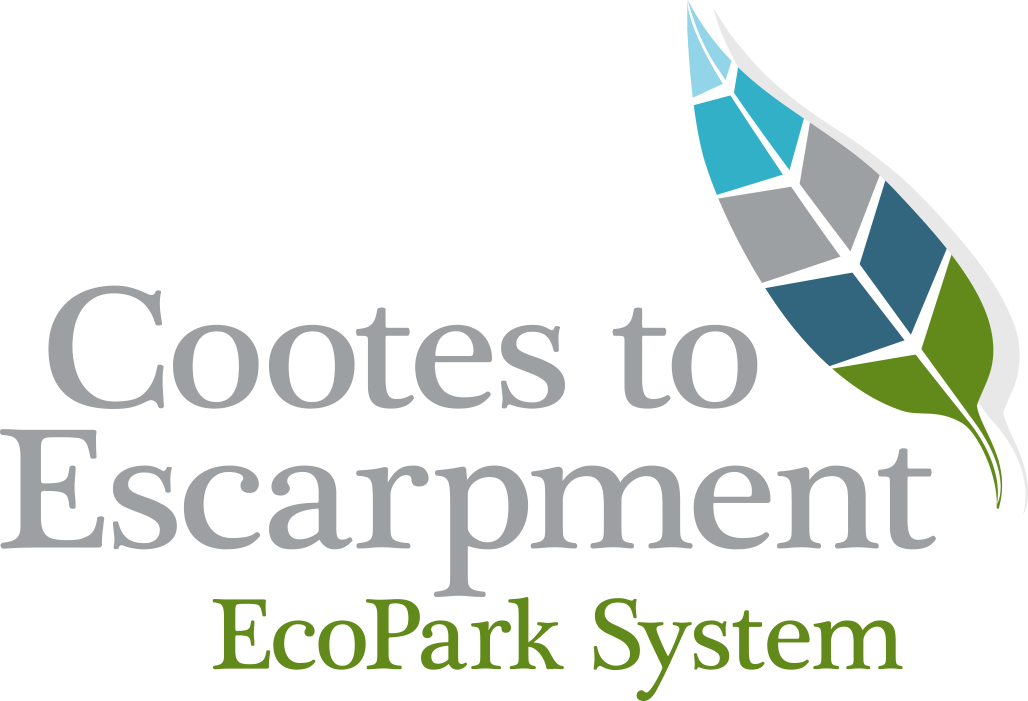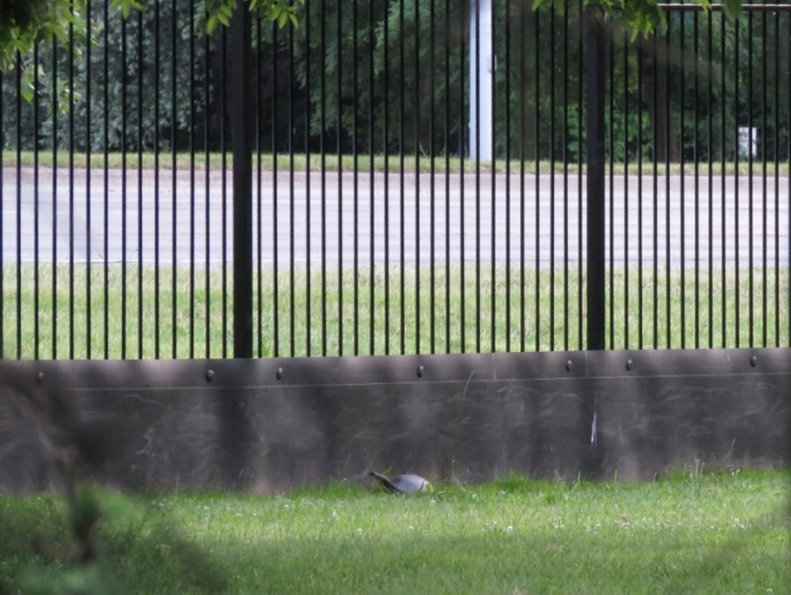Local Ecological Corridors and Turtle Populations in the Cootes to Escarpment EcoPark System
Royal Botanical Gardens
Tys Theijsmeijer, Sr. Director Ecosystem Stewardship
18 October, 2023
While a long list of wildlife species inhabit the Cootes to Escarpment EcoPark System, those who find it the most challenging to travel between natural areas are the smaller ones. Turtles, primarily found in the two big Lake Ontario coastal marshes of Cootes Paradise and Grindstone Marsh, are among the most impacted of the group. The challenges are many including wetland health, roads bisecting their habitat, and nests raided by the large urban racoon and skunk populations. The broader scale of these issues has all of Ontario’s turtle species listed under the Provincial Endangered Act. These issues have resulted in two species having been lost to the local area during previous decades (Wood Turtle and Spiney Softshell), with Blanding’s Turtles currently teetering on the brink. Blanding’s Turtles are also one of the turtle species that spend considerable time travelling upland adding to roads issue. To guide protection and recovery, the Blanding’s Turtle has well developed Recovery Strategy (2018) and local site recovery plan (2014).
Wetland health is the primary challenge for turtles. The largest local marsh is Cootes Paradise Marsh (320ha) also the most degraded, while Grindstone Marsh (60ha) is degraded, it hosts semi sizable turtle population remnants. Both marshes are part of the Hamilton Harbour Great Lakes Area of Concern program for recovery. Considerable habitat recovery has occurred but still much work remains. Within the mix of local turtles, the Blanding’s Turtle has become a focal species for special projects due its connection to these marshes, as well as their Endangered/Threatened status under the Provincial and Federal Species at Risk legislation and the IUCN Red list. It is also an ideal animal for representing the local challenges of roads, nest predation, and nesting area habitat loss that several other wildlife species similarly face. Aside from this it is also quite a charismatic looking turtle with a bright yellow chin and smiley face.
About the Blanding’s Turtle - the “Critical Habitat” (habitat necessary for survival) as defined in the 2018 Recovery Strategy puts a radius around wetland habitat defined at about 240m upland and up to 2km up connecting watercourses from the home wetland. Their EcoPark System area home is a series of wetland pond oxbows along lower Grindstone Creek within Royal Botanical Gardens Hendrie Valley area. This creates a home range for this species from the downstream area known as Carrolls Bay 4km upstream into Burlington’s Hidden Valley Park. This could also be referred to as the local habitat “ecocorridor” for Blanding’s Turtle, with broader regional corridors needed to then connect them to other populations. The end goal to support sustainability of the species is to reconnect the overall “Critical Habitat” back together within its ecological corridor. These issues are also highlighted in the EcoPark Systems Lower Grindstone Heritage lands Management Plan.
The Burlington roads bisecting the habitat that prove most challenging for the Grindstone Marsh turtles are Plains Rd West, Spring Garden Road and Unsworth Avenue. These are the earliest travel routes established in the area (~1800) established next to this rich biological area, and fully within the critical habitat area of the turtles. The roads challenge has resulted in ongoing special project funds to help with the overall Blanding’s Turtle recovery project support work, to keep them of the roads as well as tracking them to protect the eggs and then get the get the fragile young into a local “Headstart” program. For several years these funds have been provided to RBG through small donors and the Habitat Stewardship Program. In 2023 funds are augmented by a contribution from Parks Canada to the Cootes to Escarpment EcoPark System Ecological Corridor Pilot Program, part of which will be used to dramatically increase existing small animal wildlife roadside barriers (centered on turtles) at the roads noted above to reduce further road kills.
This large-scale effort inspires many residents and volunteers to be part of the program. The combined efforts may just be enough to keep the Blanding’s Turtle from disappearing locally. To compliment the roadside work occurring this year, in August 2023 a subgroup of 7 “Headstarted” (2 year old) Blanding’s Turtles were returned to Hendrie Valley from past years efforts, while another 19 hatchlings were sent off to the Headstart program for their future 2-year term. Overall, once released this will double the population setting a new future of hope for this species in this highly urbanized region and with a much lower risk of finding their way onto a busy road.



